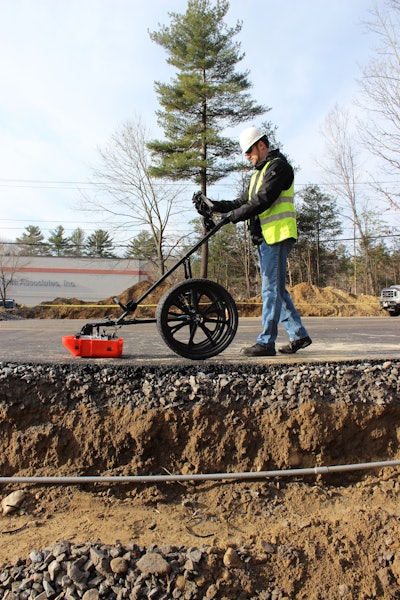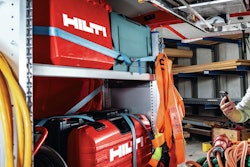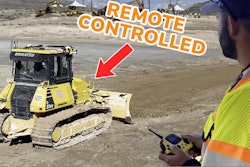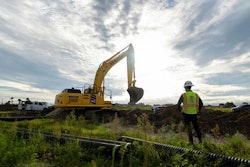
GSSI’s new UtilityScan DF uses ground-penetrating radar to scan shallow and deep to detect buried utilities.
The pushcart devices have separate 300- and 800-megahertz antennas, enabling them to simultaneously show shallow and deep views on the touchscreen. Along with scanning for utility lines, they can be used for road inspection, environmental assessment, geological investigation and forensics. They can scan as deep as 21 feet.
The scanners are programmed to detect metallic and non-metallic obstructions. “Using the UtilityScan DF ahead of digging lets users avoid service utilities such as gas, communications and sewer lines as well as underground storage tanks and PVC pipes in various soils,” the company says.
GSSI says its patented LineTrac technology is an option. It can detect AC power and induced radio-frequency energy in buried utilities.
The scanners come as either two-wheel or four-wheel pushcarts. The four-wheel model is for tough jobsites, while the two-wheel model is lighter and easier to transport.
 The GSSI UtilityScan DF pushcarts also come in a four-wheel version for tough jobsites.GSSI
The GSSI UtilityScan DF pushcarts also come in a four-wheel version for tough jobsites.GSSI
Processing software options are GSSI’s Windows-based RADAN 7 or RADAN 7 for Utility Scan. They also come with a 2-meter digital control cable, transit case, two lithium-ion batteries and a two-year warranty.
GSSI offers training classes for users in either Nashua, New Hampshire, or Henderson, Nevada.
Available accessories include the EMLID Reach RS2+ survey-grade-capable GPS that operates as a single unit or in base/rover mode with two units, and the Geode GPS that is a multi-GNSS with 9-pin serial port.











